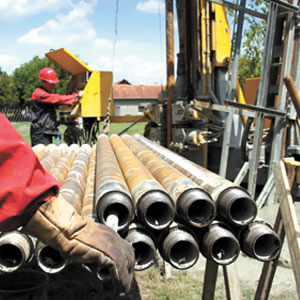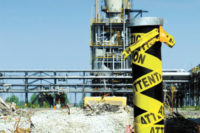Jobs in water well drilling aren’t what they used to be. Recently, I spoke with one of my water well drilling columnists, and talk always comes around to how “mature” the industry is. That statement carries a lot of water. When we talk “mature,” it has connotations: an aging workforce, a way of doing things that doesn’t change much anymore.
How much does that perception affect how young people approach the industry?

|
| Some of the skills overlap between different aspects of the drilling industry, but how much do the workers overlap? Source: iStock |
Now, I’m not trying to pick on water wells. That’s National Driller’s core readership. Our readers tell us that almost a quarter of their revenue comes from water well drilling. Many of them, of course, work in multiple areas. Water well contractors may split their time with geothermal and environmental work, for instance. My point is, people naturally follow the money. If a guy working on a small geothermal contracting crew in Indiana can’t sustain his family on the wages he makes, pulling up roots for Pennsylvania or Texas to make upwards of $25-30 an hour to drill oil and gas sounds really good.
I read an article recently on the website for the Greeley Tribune, a newspaper in Colorado. The reporter, Anne Cumming Rice, wrote at length about how innovative the oil and gas industry is. She discusses the recycling of hydraulic fracturing water, and about producers coming up with ways to work smarter, like powering natural gas rigs with natural gas (which, incidentally, burns cleaner than diesel). She mentions one company, Encana, that managed to drill 52 wells on a single pad under 5 acres square.
That kind of “ain’t it cool” stuff attracts young drillers in hordes — along with the lure of a good paycheck. Drillers, of course, shouldn’t abandon the water sector or geothermal. But we know that work in the U.S. anymore comes in cycles. If I guessed, I’d say water well drilling is down in the Midwest and up in California and Texas. Oil and gas drilling happens everywhere, but it has hotspots like Pennsylvania, Texas and the Dakotas. Energy drilling is way up right now in the U.S., and that has a big pull for people with the right skills. Workers in other drilling sectors certainly have many of those skills.
I’m interested in hearing from readers. How many of you have changed drilling sectors? Did you start in water wells and wander into oil and gas? Maybe you cut your teeth in oil and gas but realized you could drill irrigation holes for farmers and spend more time with your family?
Tell me about your experiences. What skills did you find overlapped between the drilling sectors you worked in? How were they different? Does it even matter, as long as you have a job, whether you work in water wells, geothermal, oil and gas, or construction drilling?
Let me know. Send an email to verduscoj@bnpmedia.com.
Stay safe out there, drillers.





Report Abusive Comment